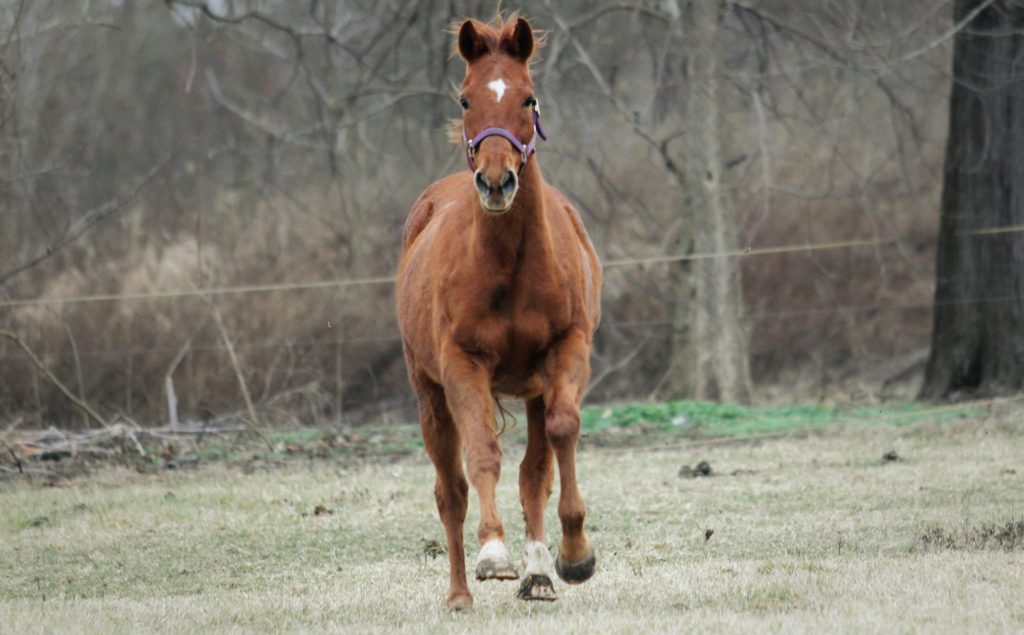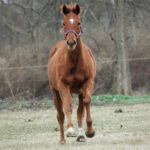If you are a first-time horse owner, you will need to know that grooming of the horse should be done daily. This helps to achieve two purposes. First of all, grooming the horse ensures that the horse is kept clean and tidy, which is important as it allows your house to be free of dirt and grim. However, the second purpose is something that perhaps not all owners will appreciate. When grooming your horse, you are expected to go through the horse body, and during this process, you might uncover certain problems that your horse might be facing. It can be a cracked hoof or a cut in the horse’s legs!
Important To Groom The Horse Daily
So yes, grooming your horse should be, as much as possible, a daily job so that you can keep the horse safe and healthy. But while caring and grooming for the horse are important, there are many facets at which you can achieve this. One of the major areas that you should care for in the horse will be the hooves since the horse will probably take quite a bit of damage to the hooves due to their daily movement or even during equestrian events. To prevent injury to your horse, you should groom the horse daily!
For first-time horse owners, you might find that cleaning the hooves can be a tricky affair. While it may seem daunting, we have constructed a guide that can help you along the away. From the tools you should be using to how you should approach the horse, we have them covered in this complete guide in caring for your horse’s hooves!
1. Essential Tools To Care For Horse’s Hooves
Here is the list of essential tools that you should be used when caring for your horse’s hooves.
- Hoof Pick: A hoof pick is an essential tool when it comes to clearing mud, rocks, or other debris from your horse’s hooves. One of the best hoof picks is this model.
- Hoof Nippers: The nippers can be considered as the horse’s version of a nail clipper. The hoof nippers’ purpose is to remove excess parts of the hooves.
- Rasp: Well, after clipping your nails, you will file it to ensure that sharp edges are gone, right? This goes the same for the hooves too. In this case, you should use a horse rasp to help to file away the sharp edges.
- Hitching Pole: More on this later!
2. Approaching The Horse Correctly To Avoid Being Kicked
If you would want to avoid injury to yourself, you will need to learn the correct way at which you should be approaching the horse. If you approach it from the rear, there is a high chance that the horse will kick you as you are not in their field of vision. So to avoid this, always approach from the front or by the side. Of course, while doing so, your movement should not be too sudden as it might trigger the horse to jump and dish out the kick to you.
We will encourage you to walk slowly to the horse without any sudden movements. As you do so, call out your horse’s name so that it is aware that you are approaching it. Note that you should not use a loud and booming voice too as it might scare your horse, especially if they are still new to the grooming process. If need be, calm the horse down by stroking on the body or along the neck.
3. Use A Hitching Post
Before you start working on the hooves straightaway, you should look into keeping your horse secured so that the movement of the horse is restricted. To do so, you should secure the horse to a hitching post. Note that you should not place the hitching post in a secluded area as it will severely reduce your horse’s field of view.
Remember that we asked you to approach the horse from the front so that it can see you so that their anxiety levels can be reduced? This goes the same for the hitching post too, as you will need to place it in an area that is open. You can opt to use either a stand-alone stand or the doors of the barn as a hitching post, whichever works better for you and the horse.
4. Finding The Optimal Position Of The Foot
Once the horse is secured to the hitching post, the next crucial step will be for you find the optimal position so that you can avoid getting kicked by the horse while you are trying to lift the foot! For this, you will need to stand right beside the horse’s shoulder. This will be the best position as the horse will not be able to kick you in this manner. If you are doing this for the first time, always ensure that you call out to the horse intermittently.
5. Placing The Foot
To lift the horse’s foot, get into the above-mentioned position and squeeze the back for the horse’s leg. This will trigger the horse in lifting their leg up. Once it is lifted, you can place the foot in between your thighs so that you have the maximum flexibility when it comes to caring for the horse’s hooves.
6. Picking The Horse’s Hooves
If the above-mentioned steps have been done correctly, you can proceed to pick on the horse’s hooves! Note that picking on the hooves is extremely important as it can help to prevent the accumulation of bacteria on the horse’s foot. The bacterial infection is termed as thrush, and you will want to prevent thrush from occurring to your horse as it good lead to other infection, and this is not mentioning the foul smell that is being produced.
To start picking on the hooves, hold the hoof pick in an inverted position such that the sharp end is facing downwards towards the floor. This will give you more control during the entire picking process. Also, this seems to be the most natural position when it comes to picking the horse’s hooves and there don’t seem to be any other possible holding positions! Proceed to insert the pointy end into the hooves without using excessive force, though you will need literally a large force before you can hurt your horse.
7. Clearing The Frog
Once you have removed most of the larger debris by using the hoof pick, you will need to proceed to clear out the horse’s frog. Not the green slimy frog, but the horse’s frog is the V like shape that is found on the bottom of the hoof. To clear it, move the pick along the sides of the V and slowly work your way to the tip of the V. This will help to clear out the smaller debris that cannot be cleared earlier.
Once done, use a brush to clear out the stubborn debris! If you need to, get a hoof pick with a brush at the end so that it is easier for you to proceed to this step.
8. Caring Of The Hooves
Of course, picking of the hooves isn’t enough as you will need to maintain and care for the hoof even after clearing out the debris. To do so, always apply a good hoof conditioner on the hooves. This is much needed so that you can prevent the hoof from cracking. There are plenty of these that you can find on Amazon, but we have decided that Farnam Rain Maker Triple Action Hoof Moisturizer and Conditioner works best on our horses.
Trimming Hooves
While cleaning the hooves should be a daily affair, you should place some effort in trimming the hooves as they can grow and potentially injure themselves if the hooves are not trimmed. Also, since hooves do help to prevent injuries in the horses, it is imperative that we protect this protective shield so that its ability to shield impacts are intact. Should you choose to ignore this, it is very possible that your horse might suffer from severe injuries, which might lead to them limping! Also during the process of trimming the hooves, you are removing a cracked portion of the hooves, and this is important as it prevents the horse from pain in the even that the cracked hooves got lodged and split apart from movement.
- When Should We Trim Hooves
Note that wild horses do not need to have their hooves trimmed since their daily movements ensure that the hooves are trimmed due to regular wear and tear. For the case of domestic horses, trimming should be done on a regular basis, but the duration is largely dependent on the season as the hooves have their own natural growth cycle.
- Summer: During summer, there will be a growth spurt, so we will recommend you to trim the hooves every 6 to 8 weeks. This is pretty standard for most horses unless your horse is used for events. If this is so, you should trim the hooves once every four weeks.
- Winter: During winter, the growth is a little slower, so you can trim the hooves once every 6 to 12 weeks. But in between this period of time, it will be good for you to check on the hooves as the tendency for the hoof to crack during Winter is higher!
What Other Factors Can Affect Condition Of The Hooves
There are several other important factors that you will need to consider as some of them are critical in ensuring optimal hoof health for your horse.
- Clean And Dry Sleeping Area
Not many people will appreciate this, but the condition of the hooves will be bad if the horse is sleeping in damp conditions. When the area is arid and damp, it is the prefect place to incubate and grow bacteria. The bacteria can them grow rapidly in mud that can be stuck under the horse’s feet, leading to thrush! As mentioned earlier, thrush is a bacteria infection that will cause the frog to turn soft and sore. This presents two problems. First, it emits a foul smell that permeates through the air. Secondly, even if the smell doesn’t affect you, the soft and sore frog can still can pain to the horse if it is left untreated.
- Horse’s Diet
In order to promote a healthier hoof, you can feed the horse with power food that can help to protect and enhance the hooves’ health. Essential vitamins and minerals such as omega 3 and 6 fatty acids will be essential to help boost the horse’s hooves!
What Else Can I Do To Care For Horse’s Hooves
Apart from picking the hooves, you will still need to constantly monitor the hooves as well as the condition of the shoes so that the hooves are protected.
- Regular Inspection
Check the horse’s hooves once every two days at least. During such checks, watch for for telltale signs of cracks. Also, check the frog’s condition since its prone to developing thrush if the horse has stepped on mud. It doesn’t hurt to do some filing or brushing of the hooves every now and then too! If there is any impurity that is an eyesore, you can take the chance to remove it too.
- Shoe’s Condition
If your horse is wearing shoes, then check on the condition to ensure that the shoe is not damaged from the regular movement. Note that if the nails are long, it can potentially puncture the shoe and possibly injuring the hooves!

